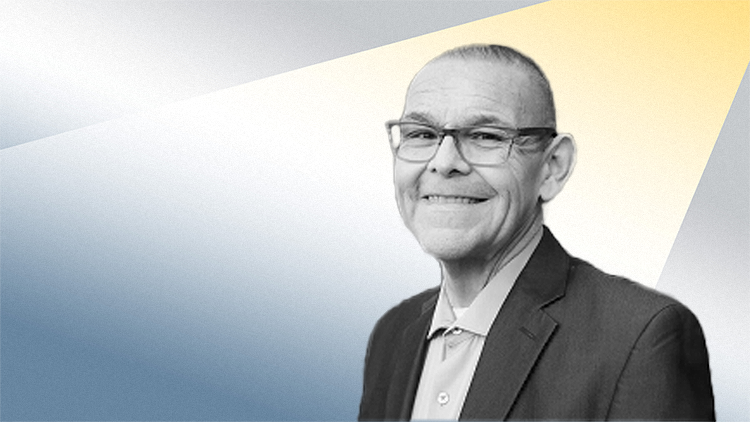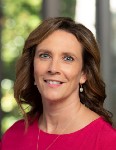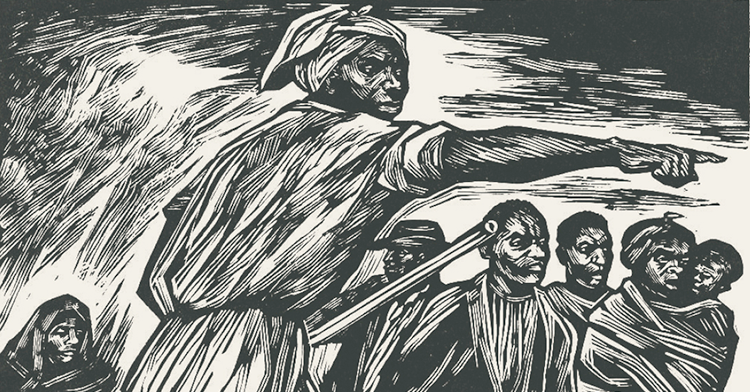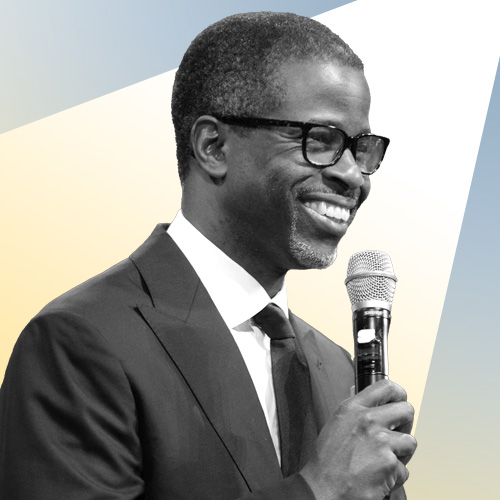The Rev. Jason Makos had an idyllic start as a priest. After ordination and theological studies in Rome, he spent four years as an associate pastor at a parish in the Archdiocese of Boston, immersed in ministry. He said Mass. Visited the sick. Delivered homilies. Celebrated the sacraments.
“It was great,” Makos said. “It was almost 100 percent priestly, pastoral work. Each day, I enjoyed the priesthood more and more.”
But in October 2010, Makos, then 33, was appointed pastor at the Church of the Holy Ghost in Whitman, Mass. Considered a medium-sized parish in heavily Catholic Boston, the church serves 2,400 families and draws more than 1,100 people to six weekend Masses. The parish’s only priest, Makos oversees an 11-person lay staff, from business manager to custodian.
It was as though overnight he became the CEO of a small business, with more on his plate than just next Sunday’s homily.
“It was an eye-opener,” Makos said.
In making the transition to pastor, Makos has been able to take advantage of a new resource: a 360-degree leadership-development feedback tool customized for use by Catholic clergy and lay leaders.
Makos is one of 15 recently ordained pastors in the Boston Archdiocese who are using Catholic Leadership 360 as part of a new initiative launched by the National Leadership Roundtable on Church Management. The feedback tool focuses not on religious or spiritual matters but on broader leadership skills, especially in managing the temporal affairs of the church.
“It’s been a good experience,” Makos said. “It sheds light on who you are as a person and a priest and how you interact with others. It gives you a window on your strengths and how you can build on those, and pinpoints areas you need to work on.”
Questions to consider:
- The Rev. Jason Makos found a 360-degree assessment valuable in making a transition to being a parish priest. Has something changed in your work as a lay leader or pastor that would make a feedback tool valuable for you?
- How open would you be to having such an instrument completed for you? Do you have any concerns or fears?
- When it comes to leadership, the line between the spiritual and secular is not always clear. In what ways do you use essentially secular skills in spiritual ways?
- Do you have individuals that serve as informal 360 feedback givers? If not, would you consider inviting a few people to do so?
- It is easy to forget that people want feedback -- indeed, it can be a gift. Do you take the time to give people positive feedback for things they are doing well and developmental feedback to help them improve?
Adapted from the business world, the feedback tool can even be life-changing, both for clergy and for those they lead, increasing self-awareness, identifying strengths, and helping shape a broader, more collaborative understanding of leadership.
Ultimately, in a church that has been rocked by crisis, Leadership 360 is about helping clergy and lay ministers “become the best they can be,” said Cathy Rongione, a Boston human resources professional who served as project manager for the Catholic Leadership 360 customization.
Reaching that goal may require more than pastoral skills alone, as Makos discovered.
“When you’re pastor, you are responsible for every aspect of parish life, not just the Mass and baptism but also the finances and supervising a staff and making sure everything is working properly,” Makos said. “You see how important the temporal aspects are, that the roof is in good shape and the walls are painted and the rectory is upgraded.”
The making of a Catholic 360
A nonprofit organization of Catholic laity and clergy, the Roundtable was established in 2005 to help bring modern management and administrative practices to the Catholic Church. Drawing on the expertise of prominent Catholics in business, finance, government and industry, the Roundtable has developed and made available to the church a portfolio of programs.
“The reality is that the church has been through turmoil the last several years and is facing huge, challenging issues,” Rongione said.
Clergy sexual abuse and financial mismanagement scandals have shaken the faithful. With declining vocations and an aging priesthood, clergy are in short supply. Like Makos, many are placed in positions of great responsibility as full pastors far sooner than they would have been a generation or two ago. To fill the void, lay leaders now serve in positions once held by priests in such areas as finance and religious education.
“What all this means is that priests need to really take on the role of leadership above and beyond,” Rongione said.
Priests have always had administrative responsibilities for leading local parishes, but the demands today are greater, said Michael Brough, director of planning and programs for the Roundtable. In addition to their pastoral duties, priests today are expected to manage a professional staff, lead fundraising campaigns, be communication experts, set strategic direction, empower others, oversee building projects, understand finances and human resources, and essentially run what are often multimillion-dollar organizations.
“Usually, people have technical capacity,” Rongione said. “The head of finance knows how to balance a balance sheet. What trips people up and causes them to not be as successful as they could be are leadership behaviors, how they engage and treat other people.”
As the name suggests, a 360-degree review gathers and provides feedback from people in various positions surrounding a given individual, including supervisors, peers, direct reports and others, and compares those assessments with the subject’s own self-assessment. The reviews have long been used in the corporate world, though experts disagree over their proper use.
Some organizations use 360 reviews as a performance assessment measure that factors into decisions on pay and promotions, but many in the field consider such use inappropriate. More often, the tools are used solely for professional growth and development, sometimes as part of an executive coaching or training program, to help build leadership skills.
Preferring the latter approach, the Roundtable turned to the Center for Creative Leadership in Greensboro, N.C. A pioneer in the use of 360-degree assessments for growth and development, the center processes nearly 27,000 participant assessments a year and only offers the development 360 reviews. Over the years it has created a list of 94 research-based leadership competencies -- such as managing conflict, inspiring commitment and communicating effectively -- which can be drawn upon to create custom 360-degree surveys, depending upon a particular organization’s needs.
For Catholic Leadership 360, the Roundtable looked for guidance to several church documents on pastoral formation and lay leadership, from the Vatican and the United States Conference of Catholic Bishops. Over several months, the Roundtable, the National Association of Church Personnel Administrators and the National Federation of Priests’ Councils worked with the center to identify the leadership traits they wished to cultivate and map those to the leadership competencies in the center’s database.
From that, two tools emerged: a clergy survey, with 99 questions across 14 leadership competencies, and a lay leader survey that contains 81 questions across 15 competencies.
At first glance, the competencies seem remarkably secular: communicating information, inspiring commitment, leading staff, bringing out the best in people and forging synergy, to name a few. But it takes little imagination to see how they would be essential skills for any priest, Brough said.
“We didn’t pull these out of thin air,” he said. “This is what the church has said a priest is called to do.”
Is leadership spiritual?
The focus is on leadership skills, not the spiritual side of being a priest, Rongione said, but that distinction is not always easy to make. The two are intertwined.
“One supports the other,” she said. “As important as it is to make the distinction between the spiritual and the temporal, it is also important to make the connections.”
In keeping with Center for Creative Leadership guidelines, the Catholic Leadership 360 tools are rigorously administered. In addition to completing their own self-assessment, subjects ask at least eight to 10 people -- superior, a supervisor, at least three peers, three direct reports and others -- to fill out the assessment online. From that, the center generates a 30-page report, showing the responses to all the questions across the leadership competencies.
The feedback process is critically important. Only two copies of the report are generated, one for the participant and the other for a trained one-on-one facilitator certified by the Center for Creative Leadership. Nobody else has access to the report, underscoring that the tool is not for performance assessment.
“The reason for that is that you are dealing with human emotion,” Rongione said. “This can be a very challenging process to go through. Hopefully, if the information is positioned and received the right way, then people will be honest and candid in how they respond and how they become more self-aware and grow.”
“It opens people’s eyes, but it does that in a very affirming way that people embrace,” Brough said. Almost always, participants discover that they are valued by others in ways they had never realized.
Although Catholic Leadership 360 has been used in only three dioceses so far, it has already shown great promise. In Pittsburgh and Metuchen, N.J., where the tool was piloted, 88 percent of participants said it was valuable to their ongoing development, and 96 percent would recommend it to others.
Putting feedback into practice
Makos, for example, said he was surprised to find that others consistently rated him higher in virtually every category than he rated himself. “It’s confirming to see how people view you as a priest and a leader,” he said.
The survey confirmed for him that he is good at communicating ideas and information to others. It’s a strength that he can build upon.
One area he needs to work on is “courage,” which refers generally to a willingness and ability to tackle difficult problems and take the lead on unpopular but necessary actions. It wasn’t a surprise, Makos said.
“I tend to be shy,” he said. “I was born innately diplomatic, never wanting to offend anybody. So this has allowed me to think about what I’m saying and how I’m saying it and the need to be clear, concise and direct.”
Makos has already been able to use this new insight. For years, Holy Ghost has had Mass every weekday in addition to the six weekend Masses. Under archdiocese policy, though, all priests are supposed to have a day off. With Makos as the parish’s only priest, that meant one of the weekday Masses would have to go.
“To get a day off, it meant we would have to drop the Thursday Mass,” he said. “Before, I probably would have said, ‘OK, we’ll still have the Mass and I’ll make up my day off elsewhere.’ But this allowed me to say, ‘No, this has to be done. We have to drop the Thursday Mass.’”
John Flaherty, secretary for parish life and lay leadership in the Archdiocese of Pittsburgh, also gained practical insights when he took the Catholic Leadership 360 survey for lay leaders during the pilot there. An archdiocese employee for more than 25 years, Flaherty said he discovered that he was perceived by some as having a “closed-ended” rather than “open-ended” communication style -- that people assumed from his position he was not open to further discussion.
“It was very helpful to me to find that out,” he said. “I realized that I wasn’t accomplishing what I wanted to accomplish. For the first time, it gave me a deeper appreciation for the perspective of newer staff people.”
Developing effective collaboration
Currently, Makos and the other 14 Boston priests who took the 360 survey are completing written plans for how they will use the results in their ongoing formation. This fall they will meet again to see how well they are doing in putting their new insights into practice.
It’s exactly what the Rev. Michael Medas, director of the office for clergy personnel for the Archdiocese of Boston, was hoping for when he approached the Roundtable about using Leadership 360 with a cohort of new priests.
“I wanted a tool that could help us do formation better,” he said. “I wanted to make sure that the time we ask them to invest in continuing formation was really meeting their specific needs.”
In turn, that view of leadership can ripple outward, throughout a parish. The task of making Christ present is not the priest’s alone but that of the entire parish, Medas said.
“These kinds of leadership skills empower the priest to help people take ownership and become more effective collaborators,” he said. “Leadership 360 helps priests practice leadership at its best, because it is about leading through empowerment and not just leading through a priest’s vision imposed on a parish.”
As the group in Boston prepares their plans, the Roundtable continues to talk with other dioceses about Leadership 360. New priests aren’t the only ones who can use it. More experienced clergy who are looking for ways to stay engaged and motivated midcareer can also benefit from Leadership 360.
With support from individual donors and foundations, the Roundtable has been able to hold the costs of the program to $750 to $1,000 per participant, depending on the size of the cohort. That cost includes three workshops -- orientation, feedback and development -- the customized report, a feedback session and support materials.
“In comparison with other leadership development programs, this has proven to be affordable to our dioceses,” Brough said. “It is also recognized as an investment that has multiple benefits.”
For at least one priest, Catholic Leadership 360 has already made a difference. Balancing the spiritual and temporal demands of his new post is a constant challenge, Makos said, “but I can still say I love being a priest more each day.”











